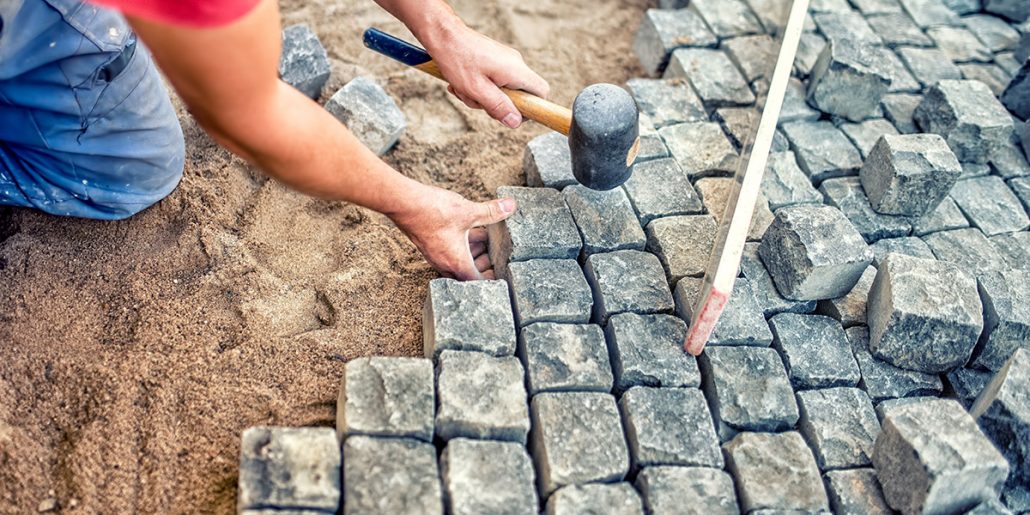Opening the Secrets of Lasting Stonework Construction Practices for Eco-Friendly Structures
Amongst the myriad strategies to eco-friendly structure, lasting masonry building and construction stands out as a time-tested and durable approach that holds a wide range of untapped possibility. From the option of materials to cutting-edge construction strategies, the keys to accomplishing sustainability within masonry construction are multifaceted and fascinating.
Advantages of Sustainable Stonework Building And Construction
Accepting lasting masonry construction techniques not only lowers environmental effect yet also uses lasting economic benefits to home builders and areas. By utilizing materials like recycled blocks, obstructs, and stones, home builders can significantly reduce the carbon impact of their projects while promoting resource effectiveness. In addition, sustainable masonry building strategies, such as appropriate insulation and thermal mass residential or commercial properties, can improve energy performance within structures, leading to decreased operational expenses with time.
Additionally, the sturdiness and strength of stonework frameworks add to lasting financial advantages. Buildings constructed using sustainable masonry practices typically need less maintenance and fixing, translating to cost financial savings for builders and residential property proprietors. The durability of masonry materials additionally makes certain that frameworks stay steady and protected, decreasing the requirement for frequent remodellings or replacements.
Eco-Friendly Masonry Materials
Making use of environment-friendly stonework materials is a crucial step towards boosting the sustainability of construction methods and minimizing ecological influence while taking full advantage of long-term financial benefits. Sustainable masonry products are sourced, generated, and utilized in a way that reduces general ecological impact. Sustainable concrete blocks integrate recycled accumulations and might include improved insulation properties, contributing to power performance in structures.
Furthermore, natural materials like adobe, rammed earth, and straw bales supply excellent thermal mass homes, minimizing the demand for home heating and cooling down power. These products are usually locally readily available, promoting regional economic climates and minimizing transportation-related carbon exhausts. By selecting eco-friendly stonework materials, building and construction tasks can significantly reduce their environmental impact and add to the creation of healthier, much more lasting developed settings.
Energy-Efficient Stonework Methods
Energy efficiency plays an essential function in enhancing the sustainability of stonework construction techniques. One essential energy-efficient stonework method is the usage of thermal mass, which includes including thick materials like concrete or block into the building's framework to take in and store warm.

Technologies in Lasting Stonework
Current advancements in sustainable masonry techniques have produced ingenious strategies that are improving the building and construction sector. One such technology is the growth of self-healing concrete, which makes use of microorganisms installed within the concrete to recover splits autonomously. This development not just minimizes maintenance costs but also boosts the longevity of stonework structures, adding to their sustainability.
Another notable innovation is the usage of recycled accumulations in stonework building - masonry contractor. By integrating materials such as crushed ceramic waste or recycled glass right into concrete blends, home builders can minimize the environmental influence of building and construction jobs while preserving architectural stability. This practice not just draws away waste from garbage dumps but additionally saves natural deposits, making it a key innovation in lasting masonry building and construction
Moreover, the integration of electronic style tools, such as Structure Info Modeling (BIM), is reinventing the method stonework frameworks are planned and created. BIM permits even more exact computations, lowered product wastage, and boosted energy performance, eventually leading to even more lasting structure practices. These find innovations collectively indicate an appealing future for sustainable masonry building in the era of eco-friendly buildings.
Future Trends in Masonry Sustainability
With the cutting-edge strides made in sustainable stonework methods, the future trends in masonry sustainability are positioned to further transform the building and construction industry. One of the vital trends shaping the future of stonework sustainability is the increased combination of modern technology. Developments such as Structure Details Modeling (BIM) and virtual truth simulations are being made use of to optimize masonry building procedures, leading to decreased product waste and enhanced power efficiency in structures.
Furthermore, the advancement of unique lasting products is established to play a significant role in improving the eco-friendliness of masonry building. masonry contractor. Technologies like self-healing concrete, recycled aggregates, and bio-based binders are gaining traction for their ability to reduce environmental effect while preserving structural stability

Conclusion
Finally, sustainable masonry building and construction practices offer many benefits for environment-friendly buildings. By making use of environmentally friendly materials and energy-efficient methods, masonry can add to a more lasting built setting. Advancements in sustainable stonework are continuously being created to additionally enhance the ecological performance of structures. Looking in the direction of the future, the pattern of stonework sustainability is expected to grow, causing even more eco-friendly and energy-efficient construction practices in the years to find.